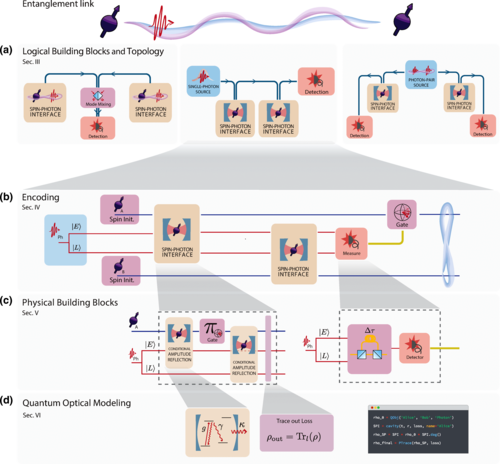This article presents a modular theoretical framework for understanding and comparing different photon-mediated remote entanglement protocols, a fundamental aspect of quantum networking. The framework categorizes existing protocols and allows for easy modification and comparison with different quantum hardware. It also includes numerical simulations, with the codes available online for other researchers. Photons are crucial in these protocols, mediating the interaction between remote stationary qubits.
The research could significantly advance the field of quantum networking, paving the way for network-based quantum computing, entanglement-based quantum communications, distributed quantum sensing, and long-distance interferometry.
What is the Significance of Remote Entanglement Protocols for Stationary Qubits with Photonic Interfaces?
The generation of entanglement between distant quantum systems is a fundamental aspect of quantum networking. Over the years, numerous theoretical protocols for remote entanglement generation have been proposed, many of which have been experimentally realized. This article discusses a modular theoretical framework that elucidates the general mechanisms of photon-mediated entanglement generation between single spins in atomic or solid-state systems.
The framework categorizes existing protocols at various levels of abstraction and allows for combining the elements of different schemes in new ways. These abstraction layers make it possible to compare protocols for different quantum hardware readily. To enable the practical evaluation of protocols tailored to specific experimental parameters, the authors have devised numerical simulations based on the framework, with their codes available online.
How Does the Framework for Remote Entanglement Protocols Work?
The framework for remote entanglement protocols is modular and consists of four layers with modules assembled by connecting the output of one to the input of another. This structure provides insights into the common features of remote entanglement protocols. Moreover, it allows easy modification of the modules to compare a protocol with different types of quantum hardware or to rearrange the quantum hardware and test different protocols with the same hardware.
The framework is designed to be flexible, allowing for dedicated simulations of entanglement generation for a given experiment. This flexibility is often lacking in other models, making this framework a valuable tool for researchers and scientists working in the field of quantum networking.
What is the Role of Photons in Remote Entanglement Protocols?
Photons play a crucial role in remote entanglement protocols. Since remote stationary qubits cannot interact directly, a flying qubit is needed to mediate the interaction and generate entanglement. Photons offer versatility as they can transfer quantum information over long distances with low-loss optical fibers, operate at room temperature, and be easily detected with single-photon detectors.
In a photon-mediated entanglement protocol, stationary qubits interact selectively with photons, usually via an optical transition, resulting in the entanglement between the photon and the stationary qubit. This entanglement between photons and spins can be used to create entanglement between two distant qubits. The entanglement generated can have high fidelity even in the presence of photonic loss, as photon detection can be used to herald a successful entanglement attempt.
How is Remote Entanglement Used in Quantum Networking?
Remote entanglement of quantum systems is a vital component in quantum networks and computing. The entanglement links between quantum nodes can be combined to distribute the entanglement through a quantum network. This distributed entanglement has been used to perform unconditional quantum teleportation between nodes without a direct optical link.
These technologies pave the way toward network-based quantum computing, entanglement-based quantum communications, distributed quantum sensing, and long-distance interferometry. Photon-mediated remote entanglement of stationary qubits has been demonstrated in numerous quantum systems, including trapped ions, neutral atoms, semiconductor quantum dots, and color centers in diamond.
The theoretical framework presented in this article provides a new way to understand and compare different photon-mediated remote entanglement protocols. By allowing for easy modification and comparison of different protocols and quantum hardware, this framework could significantly advance the field of quantum networking.
The authors’ work also includes numerical simulations based on the framework, with the codes available online for other researchers to use and build upon. This open-source approach could lead to further innovations and advancements in the field, bringing us one step closer to realizing the full potential of quantum networking and computing.
Publication details: “Remote-Entanglement Protocols for Stationary Qubits with Photonic Interfaces”
Publication Date: 2024-03-29
Authors: Hans K.C. Beukers, Matteo Pasini, Hyeongrak Choi, Dirk Englund, et al.
Source: PRX Quantum 5, 010202
DOI: https://doi.org/10.1103/PRXQuantum.5.010202

